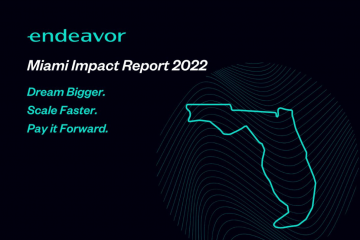As we approach the end of the pandemic it’s important to reflect on the changes we have collectively undergone in the last year. One major change was the surge in popularity of tele-therapy and wellness apps, leading many to wonder if this is a passing trend of the pandemic or a lasting quality of life improvement.
Why the surge in popularity?
Data from the Kaiser Family Foundation shows that between January and June 2019 the average share of U.S. adults reporting symptoms of anxiety or depressive disorders was at 11%. Fast forward to January 2021 and that share has increased to 41.1% of adults. When broken down by age the numbers are even more staggering, 56.2% of adults aged 18-24 years old and 48.9% aged 25-49 years old reported symptoms of mental illness during the COVID-19 pandemic.
Factors such as loss of income, job insecurity, and lack of childcare all contributed to these increased anxiety and depressive symptoms with people reporting symptoms at rates of 56%, 53%, and 49% per situation respectively. These pervasive factors affected all communities regardless of race, employment status, or geographic location.
According to the American Journal of Preventive Medicine, it is estimated that 19% of all U.S. metropolitan and 47% of non-metropolitan counties lack a psychologist. The meteoric rise in the popularity of digital behavioral health apps has opened the gateway for these underserved communities to finally gain access to much needed health resources.
With the increase in mental health issues, tele-therapy and online wellness services grew in use among consumers who were unable to get physical treatment and those who had previously never sought treatment for mental health issues. Talkspace, a teletherapy app that connects users to therapists for online sessions, reports that 60% of its 2 million users are seeking therapy for the first time. Although it took a global pandemic, the fact remains that people are finally seeking help and destigmatizing behavioral health issues.
Staying Power and Moving Forward
Like any rising industry, there is a lot of troubleshooting to be done. Investors in these tele-therapy apps worry about the long-term benefits and staying power of these services. According to Endeavor Catalyst, the biggest hurdle has already been cleared. People are already using these apps, they are building connections with therapists and getting the help they need. Relationships are hard to break off and combined with the lack of psychologists in several U.S. counties, it’s hard for users to switch to alternatives.
As previously discussed, loss of income and job insecurity were two major factors that propagated strain on mental health. Though not everyone is a therapist, helping those around us secure their livelihood is a responsibility we all share. It has never been more important to help businesses achieve scale, create new jobs and revitalize communities that have been hard struck by the effects of the pandemic.Little-by-little we will help each other recover from the unseen wounds left in the wake of COVID-19.
Research for this blog post can be found in the following articles: “In Sickness and In (Digital) Health: Digital Behavioral Health in a Post-Pandemic World” by Endeavor Catalyst, “The Implications of COVID-19 for Mental Health and Substance Use” by the Kaiser Family Foundation, and “Geographic Variation in the Supply of Selected Behavioral Health Providers” by the American Journal of Preventive Medicine. Additional reporting provided by Endeavor staff member Laura Ginebra.



